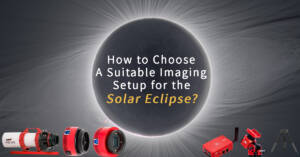
How to Choose A Suitable Imaging Setup for the Solar Eclipse?
The total solar eclipse in April 2024 is just around the corner. According to NASA, the next visible total solar eclipse to cross over the U.S. after April will come
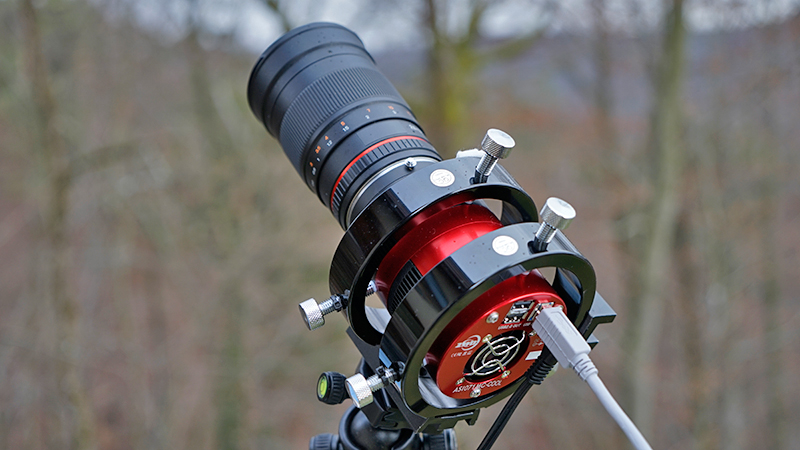
If you are looking for the mount that is small, flexible, quick to assemble, portable and enough precise for wide field photography with lens for trips under the dark sky, here is an article about it. The LighTrack II, a portable mount was made by FORNAX, a Hungarian company who is also running a very successful science project HATNet (hatnet.org). The LighTrack II is the first portable mount with friction drive on the market. The friction strip makes the movement of the mount very balanced and enables high tracking accuracy. FORNAX guarantee tracking error of the LighTrack II less than 2 arcseconds in eight minutes measuring and much more. The LighTrack II is also very interesting due to compact size and light weight (1.3 kg or 2.9 lbs). That characteristics seems to be an ideal choice for portable tracking mount.
We tested the LighTrack II with 135-mm f2.8 lens and ASI cameras, mono ASI1600 + filter wheel and color ASI071. The maximum recommended payload for this mount is 6 kilograms. Assembling the LighTrack II on a tripod is pretty quick and easy. The LighTrack II runs on 12V DC and comes with a cigarette lighter charger cable that can be connected to a power bank (a small power bank with 7 Ah is more than enough). We also tested FMW-200 wedge with polar finder scope which was designed for the LighTrack II. Polar alignment with it has never been easier. FMW-200 wedge is made from a massive aluminum body and is very precise and enables very precise movements in both ways – altitude and azimuth.
The LighTrack II mount is very suitable for imaging with our ASI cooled cameras any type of photo lenses up to 300-mm focal length. The imaging process is very simple and fast. We have to assemble the LighTrack II, ASI cooled camera and all other necessary parts, and then we just point out on a target and start capturing. Very simple! At the moment we run ASI cooled camera under computer control, but very soon you will need only LighTrack II mount, ASI cooled camera, PowerTank and instead of computer our brand new ANDROID application. All these features will bring astrophotography to the next level!
As we know dithering is necessary for astrophotography when we use ASI cooled CMOS cameras. When using a guided telescope mount and CMOS camera we got noise pattern (image bellow) on our final stack image. Most guiding softwares support dithering and simply displace the image for a set amount of pixels by displacing the guiding star after every exposure (for example PHD). In the case of LighTrack II mount with photo lens dithering is not necessary. Why? LighTrack II mount without precise guiding cannot track such precisely like guided mount, FORNAX52 for example. Every captured frame with LighTrack II is slightly different and eliminate this problem very well (every image is a little bit shifted on the sensor). When we stack all our images in one final image stacking process will eliminate this noise pattern very well. But this does not mean that the mount is not precise! With LighTrack II and good polar alignment with 135-mm lens we can do also 400-seconds exposure (the recommended longest exposure duration from FORNAX is 360 seconds or 6 minutes)!

And the final result? During the winter we were imaging Orion Nebula (also known as Messier 42, M42, or NGC 1976) a diffuse nebula situated in the Milky Way with LighTrack II, 135-mm f2.8 lens, and our ASI071 cooled camera (subexposure time was 200-sec ). Final result is outstanding!


The total solar eclipse in April 2024 is just around the corner. According to NASA, the next visible total solar eclipse to cross over the U.S. after April will come

Hello Jan, thanks for accepting our interview invitation. Congratulations on winning the ASIWEEK competition in week #23/2024! Q1: At first, congratulation that your nice image won #ASIWEEK. Can you introduce
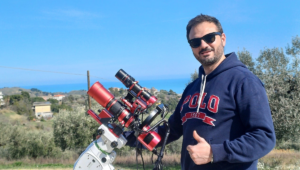
Hello Simone, thanks for accepting our interview invitation. Congratulations on winning the ASIWEEK competition in week #19/2024! Q1: At first, congratulation that your nice image won #ASIWEEK. Can you introduce
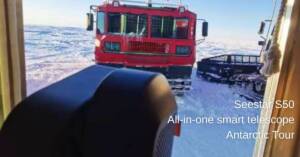
The South Pole stands as one of Earth’s most enigmatic realms, where mesmerizing auroras dance across the sky, vast expanses of icy terrain stretch as far as the eye can
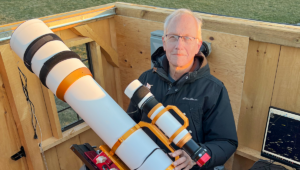
Hello Gary, thanks for accepting our interview invitation. Congratulations on winning the ASIWEEK competition in week #12/2024! Q1: At first, congratulation that your nice image won #ASIWEEK. Can you introduce
4 Comments
Ed Ebert
Hi
Thanks for this report. Can you tell me the vendor of the tube ring?
It seems they are exactly for the asi cameras
Thanks for your answer.
Ed
Sam Wen
here is it
https://astronomy-imaging-camera.com/products/accessories/holder-ring-for-asi-cooled-cameras/
Marco
I notice significant reflections (non-symmetric) for large stars. This is a problem. I do have the same 135mm lens and use it in combination with DSLR’s (e.g. Sony, Canon) and have no (!) reflection problems like visible here. Can you please clarify and hopefully resolve sooner than later. This is one of my biggest concerns about potentially purchasing a ZWO or other camera for astrophotography.
Sean Wang
reflections is cause by lens, not the sensor.